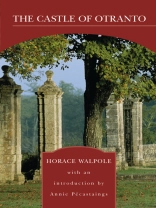With its fantastic apparitions, its ominous prophecies, and its complicated underground passages,
The Castle of Otranto heralded a new genre, the Gothic novel, still present in our literary landscape today.
Walpoles novel accomplished what no other novel had attempted before: to make readers enjoy what they shuddered to read, in other words to find beauty amidst literary materials ostensibly laced with ugliness and horror.
Yet, far from being the fruit of deliberate planning,
The Castle of Otranto was born of a dream that came to haunt Walpoles sleep one night in June 1764. The next day, all that Walpole could recall of the dream was that ‘I had thought myself in an ancient castle. . .and that on the uppermost banister of a great staircase I saw a gigantic hand in armour.’ Later that evening, Walpole ‘sat down, and began to write, without knowing in the least what I intended to say or relate.’ A classic was born.
A propos de l’auteur
Horace Walpole was the third son of the prominent statesman and Prime Minister Sir Robert Walpole. Horace Walpole was himself a Member of Parliament from 1741 to 1768, yet he is remembered more for his legacy as a novelist, a builder, and an antiquarian. Walpole worshipped his father and attempted all his life to be worthy of his parents mighty fame. While Sir Robert amassed an invaluable art collection, Horace Walpole collected innumerable prints, miniatures, and drawings that soon established him as one of the most knowledgeable antiquarians of his time. While his father built a Palladian mansion of gigantic proportions, Walpole transformed a quaint country house, Strawberry Hill, into a trim ‘toy’ castle whose hodgepodge medieval details made Gothic architecture fashionable with the upper class. Finally, while his father ruled as prime minister, Walpole sat in Parliament and indulged in vicarious dreams of power in promoting the political ambitions of one of his cousins, General Henry Conway.












